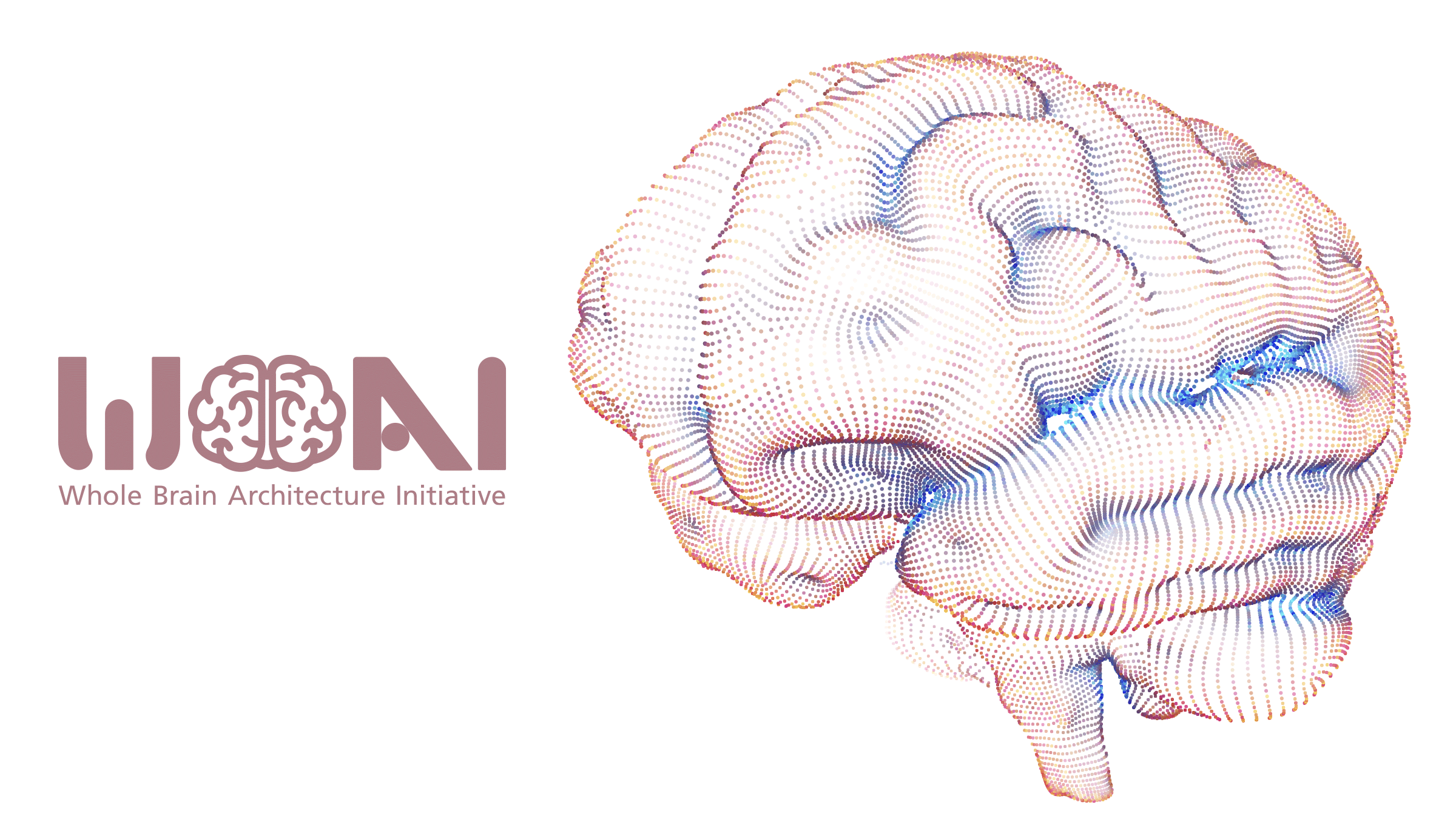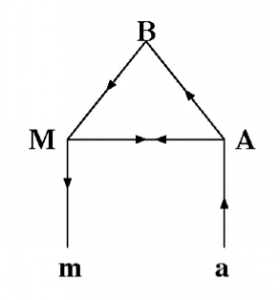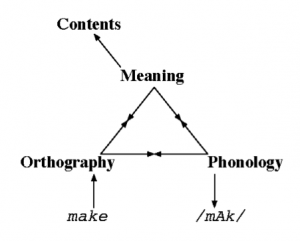Summary
The Whole Brain Architecture Initiative (WBAI) is an NPO supporting the realization of artificial general intelligence for human society over the long term.
WBAI has various activities to promote AGI research by learning from the brain.
In this September, WBAI will hold a hands-on with the theme “dyslexia and the brain,” in which the participants will deal with a model that explains the function of the brains of both healthy subjects and patients with brain lesions by reproducing various symptoms of dyslexia. The activity will be a milestone for the whole brain architecture by focusing on the linguistic function that only human beings possess.
Neuropsychology regards reading as the combination and interaction of (1) input signal processing system, (2) motion output system, and (3) semantic processing system (see figures).
Figure 1: Left: Lichtheim (1885), Right: Seidenberg and McClelland (1989)
Hands-on teams shall aim to simulate dyslexia symptoms by damaging a computational model for reading tasks. A trained reading model consisting of neural networks will be presented as the brain of a healthy subject, and the symptoms of three types of dyslexia ( surface dyslexia, phonological dyslexia, and deep dyslexia) are expected to be reproduced by partially destroying the model.
In the simulation, character strings are presented to the ‘visual cortex’ and converted to speech output (phoneme series). Simulation will be evaluated by the difference in performance in the following distinctions: (1) consistent and non-consistent word (Note 1), (2) real and non-real word, (3 ) high and low-frequency words, and (4) whether task performance differs by the category specificity of words.
Event Information
- Date:
- Orientation: Saturday, September 1, 2018; 10:30-12:30
- Hands-On: Monday, September 17, 2018; 10:30-18:30
- Location: φ cafe
Hongo 5 – chome, Bunkyo ku, Tokyo 5 Kadokawa Hongo building, 6th floor
(for the orientation & hands-on) - Theme: Understanding of the symptoms of dyslexia
- Application: please use this form.
- Cost: No fee for attendancef, while participation may incur travel expenses.
Requirements
- Experience in Python (we will use Python 3.6)
- Basic knowledge in machine learning
Organization
- Executive Committee: Jun Muto (Fujita Health University & Dept. of Neurosurgery, Keio University), Shinichi Asakawa (Tokyo Women’s University)
- Sponsored by: Fields Corporation
Important dates
- July 30: CFP
- August 13: Application deadline
- August 17: Acceptance notice
- September 1: Preliminary briefing (in Japanese) & source code release (Task description released on Github)
- September 17: Hands-on day
Evaluation
We will evaluate teams with the following criteria.
- Functional generality: to explain three kinds of dyslexia with one model
- Biological plausibility: extension in the form close to the brain will be welcome
- Computational simplicity: not to complicate more than necessary
- W.r.t. deep dyslexia, to reproduce the double dissociation between recognizing animal and non-animal words (Note 2)
- W.r.t. phonological dyslexia and surface dyslexia, to reproduce the results of consistent vs. inconsistent words and real vs. non-real words
Reference
- Lichtheim, Ludwig. 1885. “On Aphasia.” Brain, 433–84.
- Seidenberg, Mark S., and James L. McClelland. 1989. “A Distributed, Developmental Model of Word Recognition and Naming.” Psychological Review 96 (4): 523–68.
- Note 1: Consistent and inconsistent words
- Consistent word: a word whose reading rule matches that of most other words. . E.g., ‘a’ in ‘make,’ ‘cake,’ ‘lake,’ ‘take’ …
Inconsistent word: a word whose reading rule does not match that of most other words. E.g., ‘a’ in ‘cat’
- Note 2: Double dissociation
- Two cognitive functions A and B are doubly dissociated iff there are cases in which A is kept normal and B is selectively damaged and other cases in which A is selectively damaged but B is kept normal.
W.r.t deep dyslexia, the double dissociation between disorders in recognizing words in the animal category and the non-animal category is the issue.





 Japanese
Japanese